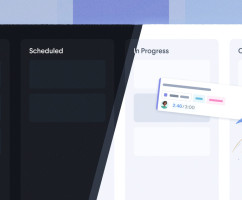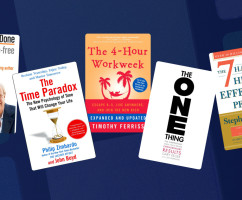Productivity Hour
Sharing the stories behind how different businesses are blueprinting efficiencies in the workplace.
Interview with Carly Kokesh, Project Manager at Copacino + Fujikado.
Tell us about your background, and your current role at Copacino and Fujikado.
Before arriving at C+F, I worked at Seattle Children’s Hospital in their marketing department. C+F was our partner agency, and I wanted to get agency side experience, so I made a move away from the client side to start at C+F about 2.5 years ago. I now work as a Project Manager here at C+F overseeing various campaigns and projects, and collaborate with just about every department.
You’ve been pretty instrumental in introducing Wrike at the agency. Tell us about the initial needs for Wrike, what your evaluation process was like, and what software or tool solutions that were in place before (if any).
When I initially started we were using a variety of different online software tools to manage projects, but a lot of project work was still happening over email, which made it hard to keep track of communication and project status. We needed a tool that could organize the project timelines, provide a proofing method for our creative, and also give collaborators a place to communicate easily.
Did you run across any challenges with Wrike’s implementation, or in gaining traction / adoption?
We were lucky in that we had full support from management, who not only financially invested in Wrike, but gave us the platform and the time to deploy and train staff on a timeline that worked best for individuals and the group as a whole. Change management is challenging, and moving to Wrike was easier for some than others. Staff who were more tech savvy took to it quickly and became early adopters. The project management team had to work more hand’s on with those who were not used to a communication tool outside of email. It became a constant mantra to remind people that the specific conversation, timeline, or status update needs to go in Wrike. We are still working to remind people, although as a group we have come a long way!
Are there any areas where you’ve been thinking about implementing other apps to boost Wrike’s functionality? For example, at HourStack we are hearing more of our clients asking for an integration with Wrike, to boost easy and accurate time tracking and resource allocation.
We have been using Wrike a little under a year so while we are seeing great results with internal users, we still want our team to master it before implementing any other apps or new features. I think in the future we can see sharing Wrike with our clients, but I think we are still a ways off from that, and will want to carefully consider if that is the best process for our agency.
What tips do you have for any organizations out there who are thinking about implementing Wrike?
I believe that Wrike is a great all in one tool for project planning and management. It has a simple and straightforward interface, enables great visibility and collaboration among all users, and you are able to streamline the workflow easily with tasks and deadlines.
My main tip would be to have your early adopters and most frequent would be users receive a demo with the Wrike team, and comment on how they can see this improve their work. Start the process with your “champions” who are excited to get a tool that can make them more organized and efficient, and they can help your organization see all the benefits having Wrike would bring.
What do you think is unique about an agency’s application of productivity tools? Are there any that work particularly well for agencies or are more popular?
I think that something that is unique about working in a creative agency is that you are working with many different kinds of people in different departments who organize themselves and like communication differently. I do not think any online tool can 100% satisfy every need of a project. There is still a need for meetings and face to face communication. The great thing about Wrike is that its capabilities allow for less email, easier ability to work remotely when needed, and allow more time for the work that needs to happen face to face. People are on email less, and creating, working, and collaborating more.
What other software tools do you currently use to collaborate and manage your work? Do you have any favorites?
We also use Smartsheet which is a great way to communicate with our clients virtually, and share high level data and projects statuses in more of a snapshot.
What should people be thinking about if they are looking to bring in any new productivity tools or processes?
- How will this truly help your staff? You have to sell new tools and processes, and show people how it will make their lives easier. It can be hard to get someone on board learning yet another tool in their already busy lives. You have to show them how it will save time and benefit them personally to get their buy in. Do it from the beginning. Start with the benefits to set the scene, before diving into the training.
- How you deploy a new process or tool is key. There is not a one size fits all method when it comes to training. If you do not consider how your staff learn, and the different approaches for sharing new information, you can reduce participation and enthusiasm before you even get started.
What is the overall business impact when the right software tools are implemented? What ROI have you seen from having the right tools and resources in place?
The number one impact we have seen is more communication and collaboration with the right teams. This has led to a higher frequency of hitting our internal deadlines, and having client success in launching their campaigns on time.
How do you think your physical work environment impacts your productivity? Do you have any tips?
Our agency is a very face to face, collaborative place. We are small and communal, and sharing important information in the kitchen or walking by someone’s desk is common. Another mantra of ours is, “If it’s not in Wrike it doesn’t exist”. Easier said than done, but it does help us to remember that we need to document any communication in a place where all responsible parties can see it.
Updated November 29, 2022 in Stories






